“Proud that we pulled together in this crisis”
The ‘heroes of the month’ in August: the staff of our services Information Management and Services, and Education and Student Affairs, who ensured that the university could carry on digitally as soon as possible when the pandemic forced the campus into lockdown.
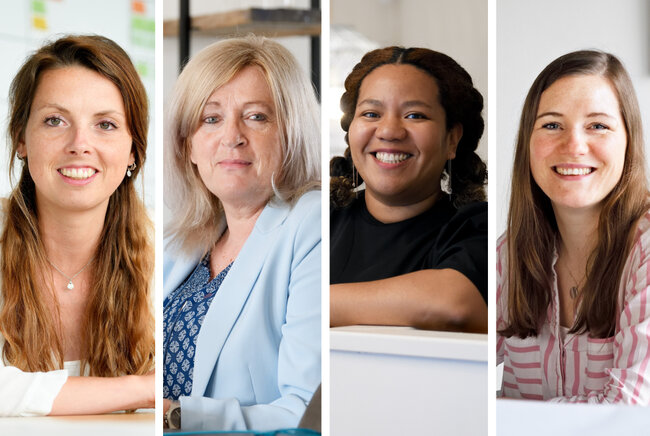
How do you keep a university with thousands of students and employees up and running when the campus shuts down, almost literally overnight? When your entire educational offering, and more, has to be organized online at the drop of a hat? Above all, as the staff of the services Information Management and Services (IMS) and Education and Student Affairs (ESA) know from experience, by applying focus and consensus thinking. “A lot can be achieved when the situation is urgent.”
With slight amazement is how Daian Saman, education support officer with ESA, describes how she viewed the run-up to the corona crisis in the Netherlands and Europe. In 2009 in her home country of Mexico she had witnessed Swine flu at close hand, luckily without seeing any of her immediate circle of family and friends succumb to it, “but I did see how quickly a situation can change and escalate.”
That the Netherlands and other nations - despite worrying news from China, and before long Italy - did not switch at once to the highest state of readiness and a hard lockdown, is something she nevertheless understands. “I think they did what they could in the context of Europe and Dutch society. It simply isn't that easy here to force people to do something.”
“Swine flu taught me how quickly a situation can escalate”
Daian Saman, education support officer (ESA)
Then, in March 2020 measures and, above all, restrictions came thick and fast - and TU/e quickly joined the ranks of institutions shutting down almost completely. The overriding question, dominating that single week of suspended education in March, was this: how can we keep our primary processes up and running?
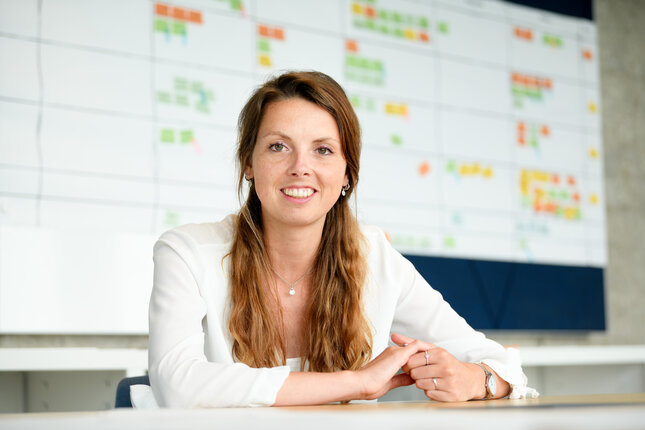
“Our education had to move online, and everyone dropped everything to accomplish this. This focus was fine to see, and it felt right. Together, we really put our shoulders to the wheel,” recalls policy officer Susan van de Ven (IMS). She had just arrived back - a few days earlier - from a girls' weekend in Seville; she touched down at Eindhoven Airport in the immediate aftermath of Prime Minister Rutte's TV apology for shaking hands with RIVM director Jaap van Dissel, an awkward slipup given the situation. “That same evening we received the email from the Executive Board requesting that we work from home.”
Gaps
What online education apps do we have and are we already using? Which tools or applications are we still missing, where are the gaps? How can we help lecturers remotely? These questions were among those taking center stage at IMS in the first few days. Before corona struck, many lecturers had been using, among other tools, the demo version of Big Blue Button, a platform for online learning within the Canvas learning environment, knows Ans Wevers, departmental head of Educational Applications. “This was exactly what we needed during corona; the capability in Canvas for a large number of people to follow a lecture at the same time. Because we were already using the free demo version, it only took us a couple of days to make the tool itself available; this was a relatively easy goal.”
For IMS colleague Van de Ven one of the first issues occupying her attention was the introduction of Panopto, a platform for recording and streaming lectures, and its link with Canvas. Consulting various IT colleagues is a necessary step when such processes and choices are involved, as she briefly describes, and the delicate balance between functional requirements and operational security always presents a significant challenge. “You want to offer lecturers practical support as soon as possible, but equally you want good privacy and security in place so you never face an awful data leak.”
Another project that corona threw into the fast track was the rollout of Office 365 across the entire university. This occupied that week of suspended education mentioned earlier. “A whole project team was already on this pre-corona,” says Wevers. “We had a good understanding of the possibilities; we were mainly waiting on solutions to a number of privacy issues. For the rest, it was a question of coordination and the rollout, and that was managed in a little over a week.”
“I got the odd reproachful comment because we didn't want to roll out Zoom across TU/e”
Ans Wevers, departmental head, Educational Applications (IMS)
Since then Microsoft Teams within the Office 365 suite has become a particularly trusted online hub. Initially with no more than four people onscreen, “a major drawback for lecturers meeting online with several dozen students, but like others Microsoft responded to corona by switching up a gear,” says Wevers. Despite this, and to the frustration of the IT experts, many in the TU/e community, caught up in the homeworking frenzy, were themselves desperately seeking an online solution - with the ready-to-use Zoom a popular favorite.
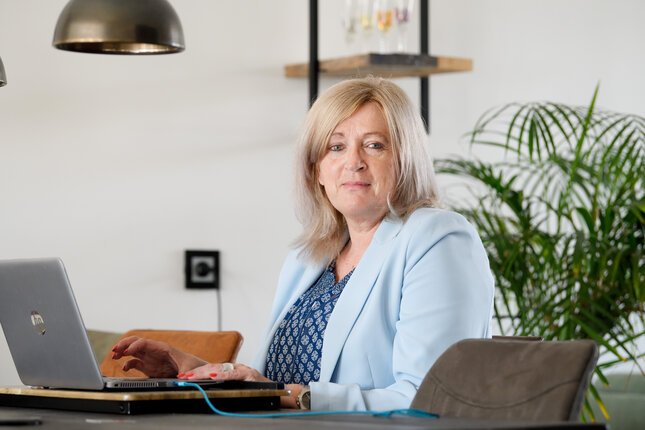
Wevers: “In the regular meeting with managers at ESA (which she started to attend when the corona crisis broke, liaising from IMS ed.) I certainly got the odd reproachful comment because we didn't want to roll out Zoom across TU/e. I could understand their need and standpoint. I was also aware that despite our best efforts people would still use it. But from a privacy perspective I knew it posed a problem: Zoom was not secure, we'd be running too great a risk. The pressure was taken off us when the Executive Board voiced an opinion: ‘Really, that's not the route to take.’ I have to say, people at ESA later let me know they were happy with my contribution, however difficult to hear it may have been.”
Someone else with a mountainous task ahead of her was Nikki Minkenberg, whose ESA remit includes education planning, grading and student administration. In the midst of the pandemic she was tasked with the preparation and introduction of TU/e’s new timetabling system TimeEdit, adopted back in April. Consider this, how do you set up a new system like this amidst the uncertainties involved in a global public health crisis, the constantly evolving insight, and the wide range of future scenarios, all of them vague, while closer to home there is no clarity about the likelihood of on-campus education?
Campus puzzle
In particular, drawing up the lecture theater timetable for the first two quartiles of this academic year was, says Minkenberg, “an immense undertaking. It was an absolute puzzle working out what could take place on the campus, not forgetting the fewer seats available per theater if students are required to observe distancing. For each program, the ESA managers and program directors made a selection and we talked with lecturers. ‘This guided self-study for your course can be held on-campus’; ‘You'll have to give this lecture online’; ‘What will you need to do this?’”
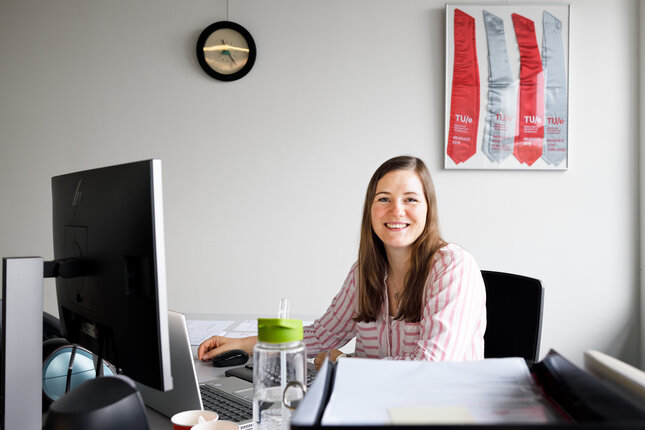
Many people were under great pressure, Minkenberg knows, “We had a lot to deal with at once: the preparations for the new academic year, while the pre-summer exams still had to be organized. The introduction of all our online education was hugely accelerated and everyone went the extra mile to help make that possible. Bizarre, looking back. That was such a monumental achievement.”
“A lot can be achieved when the situation is urgent”
Susan van de Ven, policy officer (IMS)
Above all, Wevers is proud of “how we pulled together; of how IMS and ESA, usually two separate TU/e services, very much acted in concert. And of how quickly we got programs continuing online, with a few teething problems admittedly.” In the early phase in particular she was, in her own words, “in 'on' mode day and night. But I loved doing it.”
If corona has demonstrated anything, in her opinion it is “that under very great pressure you can achieve rapid results without needing to abandon principles. Often it takes I don't know how many discussions; now it became evident that you get people aligned within a week.” Van de Ven shares this finding: “A lot can be achieved when the situation is urgent.”
Gave their all
Saman draws attention to the desire to innovate in education, and how its necessity doesn't strike everyone equally at the same time. “We were used to having to catch a lecturer at the right time, to doing our best to convey that a particular change would benefit them. Now there was no time for second thoughts; lecturers simply had to switch gear right away, even those with barely any experience of working with online tools. And they gave their all, without exception, for the sake of their students.”
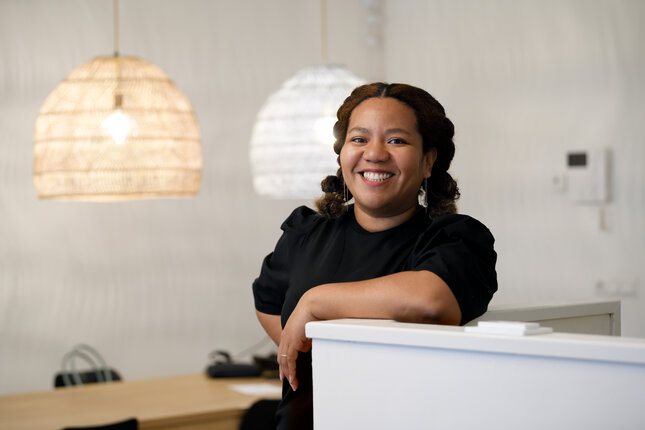
About the part they themselves played in keeping the university afloat during a crisis, the four women are modest. “The thing I'm most proud of is that it took us only two days to get ready to help lecturers. We had a plan, we had the teaching methods, and we were available,” says education support officer Saman. Van de Ven too comes back to “yes, it has to be that teamwork, and everyone's hard work and commitment for the good of our students, lecturers and researchers. Of course you know that readiness is there, but now it was even more evident.”
“Now I know that by going with the flow, I can deal well with things”
Nikki Minkenberg, education planner (ESA)
Nonetheless, there is some space for personal pride. Take Minkenberg for example, in her case it stems chiefly from her successful effort to take care of everything on her working plate right up to her maternity leave, which started in mid-May last year. “I had a baby in my belly, the world was changing, my work was changing and my home situation was changing. But now I know that with flexibility, and by going with the flow of what is happening to me, I can deal well with things.”
Has the world changed for good, for example when it comes to online learning and working? The staff at IMS and ESA have little doubt. “At the start we swung hard towards ‘make everything digital’, but I think we've since changed our minds on that,” says Van de Ven. “I'm hoping for a healthy mix, with plenty of scope for genuine contact. Being together physically in the same space with other people, you certainly get a better sense of the atmosphere and how the wind the blowing.”
Wevers too would very much rather sit “physically across from someone in a conversation” and if at all possible, back on campus is where she prefers to hold her bilats with her co-workers. Yet, she believes, the move towards more digital learning and working was clearly on the cards, global crisis or no global crisis. “Sooner or later we would have gotten to where we now, but it may have taken us five years. Corona has wildly accelerated this process. At the end of the day you want to get to the point that students are able to study wherever and whenever they want. The basis for this has now been laid, from which we can carry on building.”
Keep or kiss goodbye
Saman thinks “surely by now everyone recognizes the benefits of working from home and digital working; it gives you a certain flexibility. In the coming months and years we shall have to discover what works for us long term. In education, where we now have to evaluate which online tools we want to keep and which we'll kiss goodbye, but also as individuals.”
And although she is looking forward to more three-dimensional contact, it is precisely the online encounters that have made some relationships more personal, she finds. “You suddenly saw the human side of colleagues, perhaps because a child was onscreen, sitting on a lecturer's lap.” She laughs via the Teams screen: “I have caught a glimpse of what your home looks like; that's quite something and it would never have happened otherwise.”
More on our strategy


![[Translate to English:] [Translate to English:]](https://assets.w3.tue.nl/w/fileadmin/_processed_/c/f/csm_BvOF_2024_0319_AEV_license_TUe_Dirk_van_Meer_-_CORE_1__c976e259a5.jpg)
